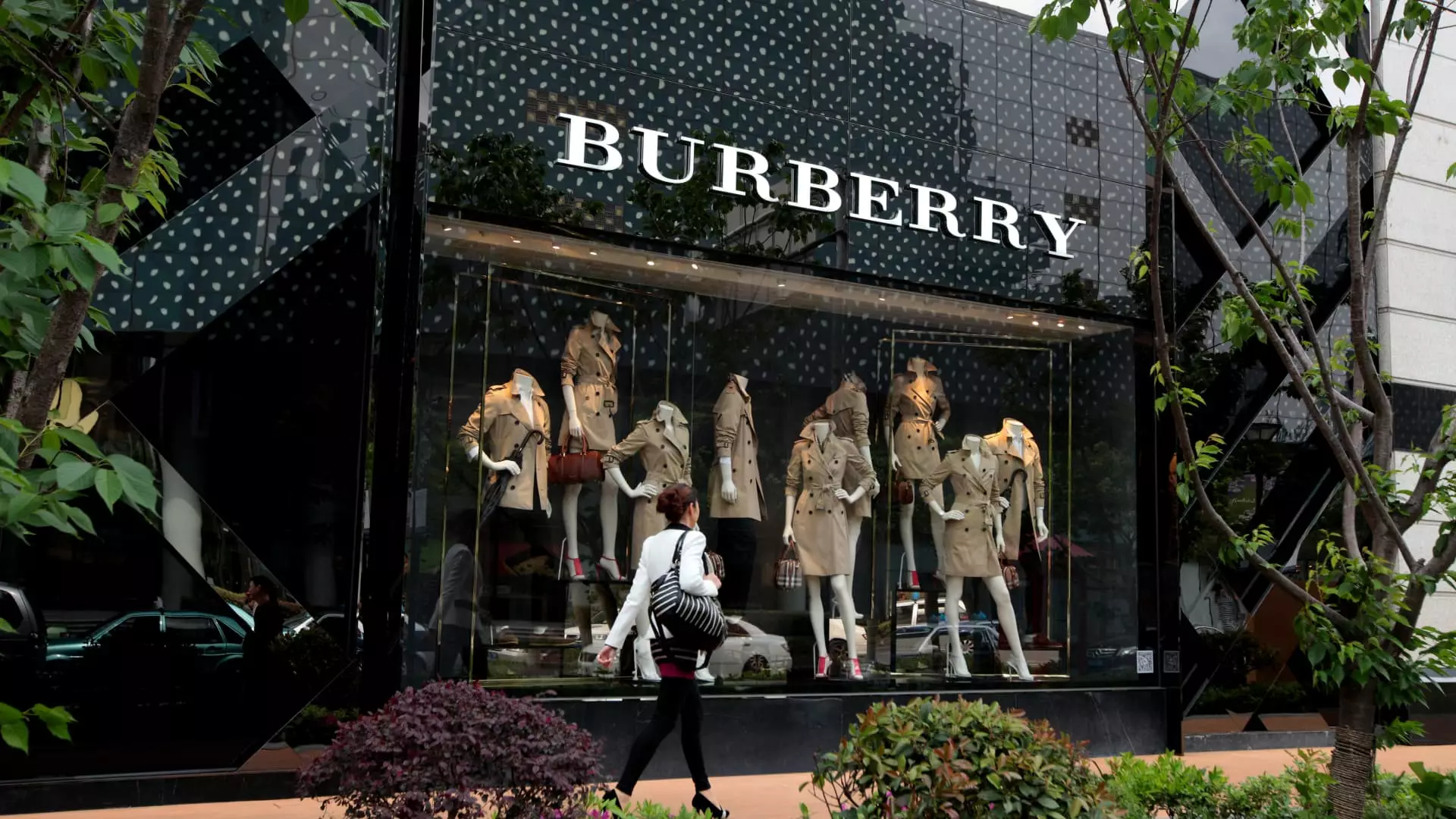In an era marked by shifting consumer preferences and intensified competition, luxury brands often find themselves at a crossroads. For Burberry, a storied name in British fashion, the need for transformation has become increasingly urgent. The luxury market’s contraction, coupled with a mysterious drift from core offerings, has compelled Burberry to embark on a bold new strategy dubbed “Burberry Forward.” This initiative seeks not only to reclaim lost market share but also to reaffirm the brand’s historic identity and elevate its presence in a saturated marketplace.
At the heart of Burberry Forward lies a renewed focus on the brand’s heritage. The strategic overhaul aims to center on iconic items, particularly the classic trench coats and hallmark scarves that symbolize the brand’s legacy. By harking back to its roots, Burberry aspires to foster a more genuine connection with consumers who value authenticity and craftsmanship in an age where fast fashion often dominates. New CEO Joshua Schulman’s vision underscores the importance of product curation that not only highlights classic designs but also revitalizes the luxury fashion narrative that Burberry has long championed.
This recalibration was catalyzed by a sharp downturn in the company’s financial health. The announcement of Schulman’s plans coincided with a troubling report indicating a consecutive 20% dip in sales for the second quarter, further illuminating the necessity for change. Market analysts suggested that the brand’s departure from its traditional styles and an over-reliance on niche offerings had alienated long-time customers and diluted its brand proposition.
The immediate market reaction to the announcement of Burberry Forward was overwhelmingly positive, with shares soaring over 22%, marking one of the company’s biggest intraday gains to date. This surge reflects investors’ hopes for a turnaround. Analysts have cautiously applauded the strategic reorientation as a potential pivotal moment for Burberry, emphasizing the need for a coherent brand identity that resonates with contemporary luxury consumers.
Engagement from stakeholders was coupled with a recognition of the challenges ahead. With Schulman’s track record at other luxury brands, there’s an expectation that his expertise will lead to fruitful innovations. Yet, the transition is fraught with risks, particularly in marrying the business-centric strategies with the artistic aspirations of the brand.
Despite analysts recognizing the potential “turning point” signaled by Burberry Forward, there is an implicit warning about the pitfalls of nostalgia. While leaning towards heritage can establish authenticity, it must be balanced with relevant modernity to attract a younger consumer base. Schulman himself has acknowledged that Burberry’s previous elevation strategy has resulted in pricing structures that have not aligned with market expectations—particularly regarding leather goods.
Moving forward, one critical challenge will be to ensure that the brand’s creative endeavors do not become stagnant. Effective collaboration between Schulman’s corporate insights and the creative vision of designers is paramount. Analysts propose that Burberry could learn from competitors like Louis Vuitton, which successfully integrate high-end luxury with accessible pieces while maintaining a clear brand narrative.
The crux of Burberry’s success will hinge on this integration of vision and execution. Analysts from RBC Capital Markets and Quilter Cheviot have highlighted the significance of honing in on Burberry’s strongest attributes rather than chasing fleeting trends. The recent shake-up in leadership, represented by Schulman’s appointment as the fourth CEO in a decade, suggests there’s an increasing urgency for a cohesive and resonant strategy.
Statements from leading analysts indicate that the path forward will involve rigorous reassessment of product design, pricing architecture, and distribution channels. This comprehensive approach aims to strike a balance between maintaining Burberry’s luxury status and evolving within a competitive landscape. If Schulman and the design team can align their efforts effectively, there is potential for Burberry to resurrect its image as not just a heritage brand, but also as a forward-thinking luxury label.
Burberry stands at a crucial juncture, fueled by a comprehensive strategy designed to revitalize its market presence while honoring its rich legacy. The journey ahead requires delicate calibration—balancing tradition with innovation while responding to the evolving preferences of luxury consumers. If executed thoughtfully, Burberry Forward could catalyze a much-anticipated renaissance, guiding the brand towards sustainable and profitable growth in the luxury fashion landscape. The world will watch attentively as Burberry forges a path that not only celebrates its past but ambitiously seeks to define its future.

